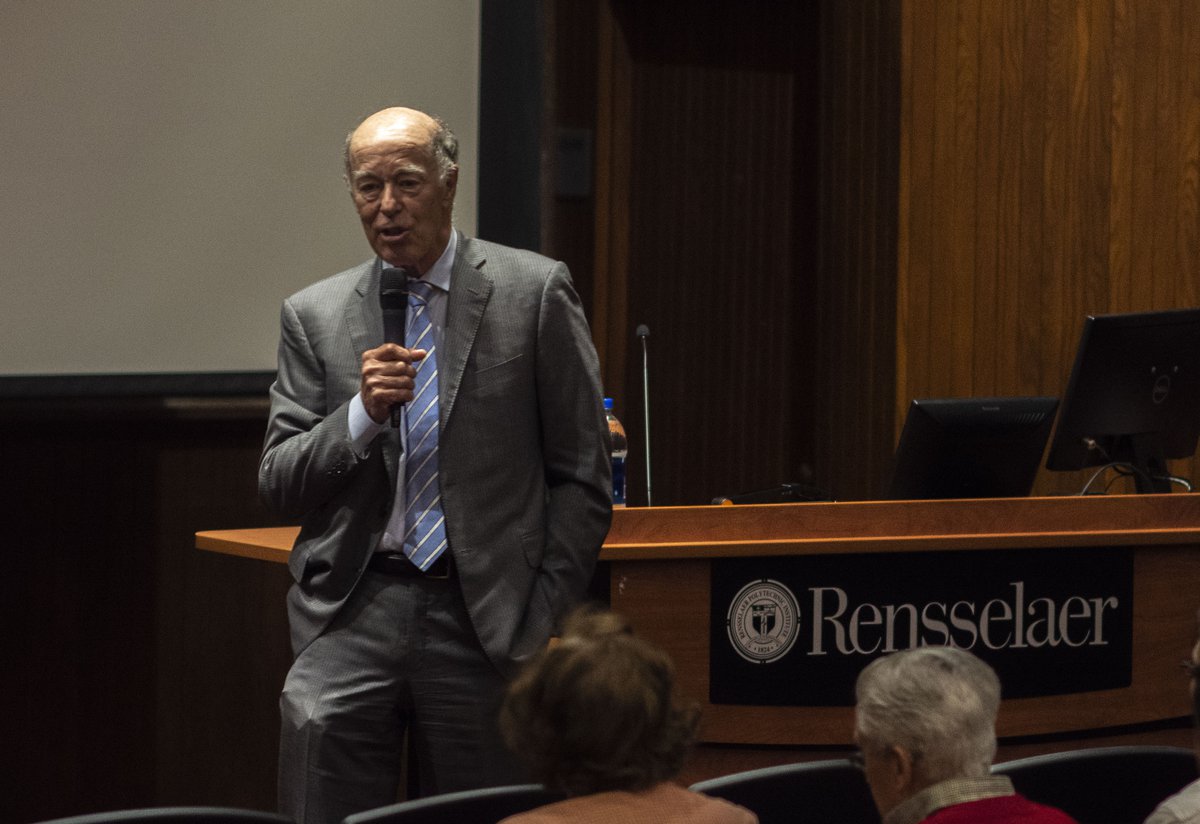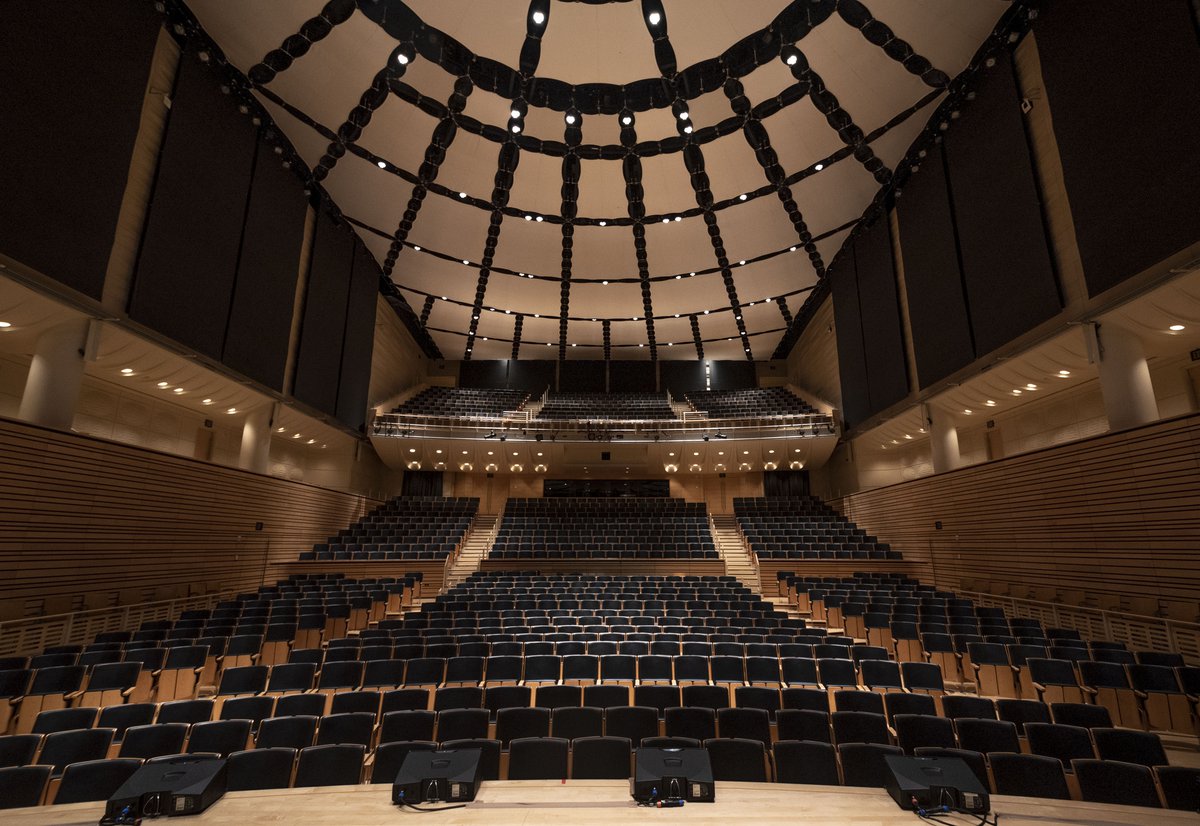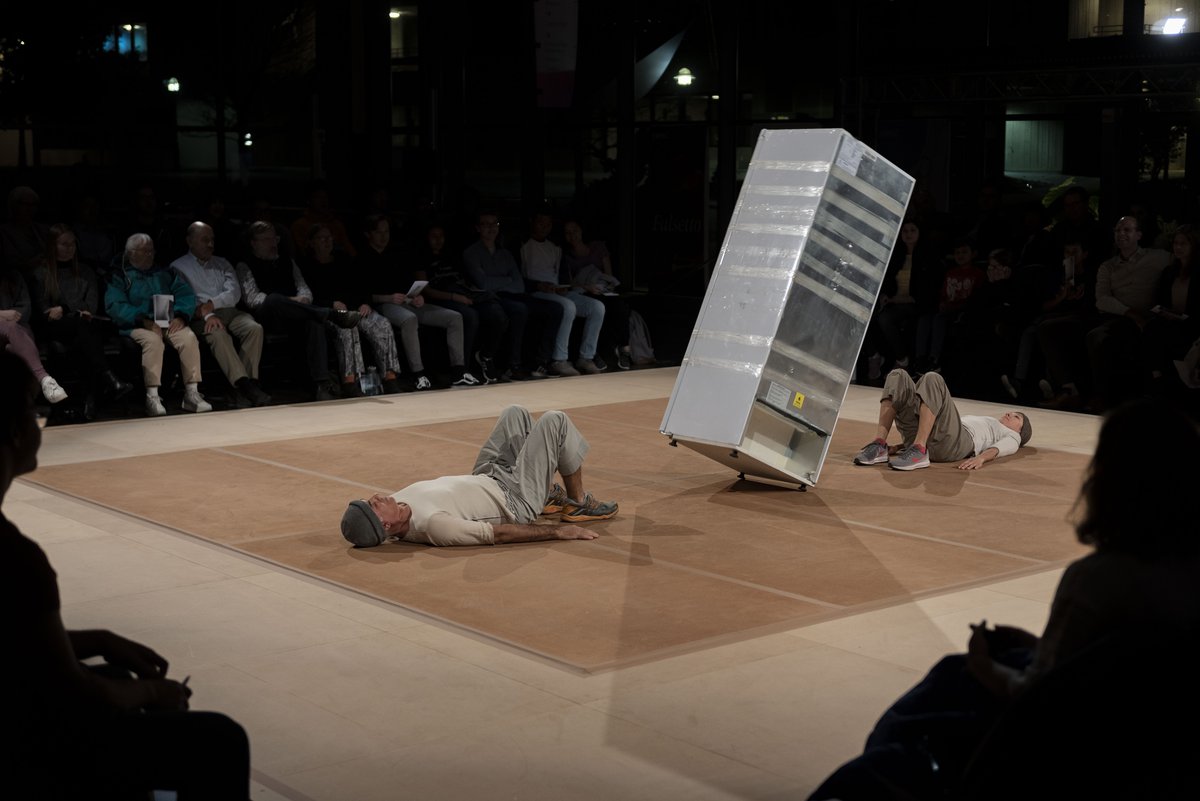Students gather to witness "The Galactic Premiere"

Kurt Hentschläger’s “EKO,” publicized as “a splendid void of darkness,” clearly piqued the interests of many Rensselaer students. Unlike any other event I have attended at the Experimental Media and Performing Arts Center, all tickets were completely sold out and an additional showing was added to accommodate more attendees. Even following this second showing, more students waited eagerly in the lobby for a possible opportunity to experience the piece.
Director of EMPAC Johannes Goebel introduced the event and prepared attendees for what would come: the room would become pitch dark and sudden bright lights would appear. To maintain the controlled lighting of the studio, even lights from exit signs would not be seen; EMPAC staff members were standing in front of the signs, covering them, and would uncover them in the case of an emergency. Staff members collected any light-emitting items attendees were wearing. As attendees entered the studio, they left the possessions that they normally carry with them at the door, including their backpacks and cellphones.
Goebel informed attendees that if they were scared or wanted to exit for any reason, they could stand up in the room. Infrared cameras pointed on the audience were being watched by the staff, and they would use this sign to raise the lights and let the person leave.
Excited to experience “the galactic premiere” promised by the event description, attendees waited in anticipation. As the lights slowly dimmed to pitch darkness, I was mesmerized by a score filled with unusual string instruments, vibrations, and metallic sounds. The strange music that whirled around me combined with buzzing sounds in the darkness made me feel as if I was traveling to a new world. Stripped of the things I normally carry with me, I reflected on my time away from the Internet, my homework, and texts. Suddenly, a flash of bright light filled the room, and despite Goebel’s warning, I felt my heart stop and an audience member shrieked with surprise.
Although the projection flashed off immediately, because of the darkness of the room, the light still filled my frame of vision and it slowly dimmed as time passed. A series of flashes of visual effects–different shapes of vibrant colors–combined with celestial and rumbling sounds provided a novel experience to audience members.
Unlike many other EMPAC events in which artists speak about their works, Hentschläger did not provide any introduction or explanation of his piece to audiences. Perhaps this was to provide viewers with a clean slate of expectations for the performance, so they could develop their own perspectives on the piece. To me, this piece felt like an experiment in human vision rather than a story with meaning. The title of the piece “EKO,” I think refers to the “echoes” of light that filled viewers’ visions even after the lights darkened.
As I sat in the room, anticipating the next flash of light, I thought about how our senses can be altered, heightened, and warped according to our environments, what we observe, and our mindsets. Sometimes, a flash of light of a different color appeared while the previous flash was still fading in my vision, heightening my awareness of my sight.
Different individuals had unique perspectives of the event: members of The Polytechnic who attended felt grateful for the meditative state the piece stirred, while others felt that there were hidden messages in the imagery of the shapes. How were shapes and colors of imagery chosen and why? What was the intended impact of the unusual music score on the audience?
Many questions arose in students’ lively discussions as they exited the studio at the end of the piece. After the event, EMPAC staff members distributed their routine after-show forms. From my observation of previous EMPAC events, I have noticed that many students simply circle the multiple choice answers about themselves and how they heard about the event. However, this time, I noticed a few students stop to write in a section that is often untouched: the feedback section. Many students continued to talk—or write—about the event after it was complete as they sipped on tea and coffee. This EMPAC event reached more students than I have seen in my semester at Rensselaer, clearly affecting and intriguing its audience.

 Guest Speaker
Guest Speaker
 Empac Event
Empac Event
 Empac Event
Empac Event